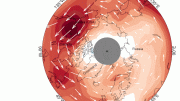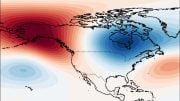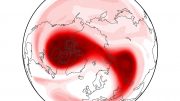
Australian hot and dry extremes can have devastating effects on human health and resources.
An multinational research including Monash scientists has cautioned that changes in springtime winds high above the South Pole are likely to cause higher than average temperatures and fire-prone weather conditions in Australia.
“Attention so far has focused on the importance of stratospheric warming in the Northern Hemisphere and its impact on extreme climate,” said study author Dr. Ghyslaine Boschat, a Research Fellow at the ARC Centre of Excellence for Climate Extremes and School of Earth, Atmosphere, and Environment at Monash.
“Our study is significant because it is the first of its kind to identify and quantify a direct link between variations in the Antarctic polar vortex in spring and Australian hot and dry extremes from late spring to early summer,” she said.
“This has major implications for the predictability of extreme climate in Australia, as well as possibly other regions of the Southern Hemisphere.”
The study, led by Dr. Eun-Pa Lim at the Bureau of Meteorology, was published on October 7, 2019, in the prestigious journal Nature Geoscience.
Extremes of heat and dryness in Australia can have disastrous impacts on human health, natural resources, and ecosystems, particularly when these circumstances are unanticipated.
The study demonstrates that variations in springtime winds high above the South Pole can have a significant and far-reaching impact on Australia’s surface climate; a weakening of these winds in spring results in warmer temperatures, less precipitation, and an increase in heatwaves and fire-prone weather conditions over late spring to early summer, especially across NSW and southern QLD.
“Our findings can help us predict and prepare for these extreme events with sufficient lead time in Australia, and possibly in other regions of the Southern Hemisphere,” said study co-author Associate Professor Julie Arblaster, also from the Monash School of Earth, Atmosphere, and Environment.
The researchers utilized climate records from 1979 to 2016 to identify years of substantial stratospheric warming (or strong polar vortex weakening) and assessed the chance of exceptionally hot and dry weather over Australia in those years compared to others.
They discovered that when a substantial polar vortex-weakening event occurred, the likelihood of hot and dry extremes increased by around four to eight times.
Dr. Eun-Pa Lim said in the Southern Hemisphere, the polar vortex tended to vary only moderately, with the exception perhaps of September 2002 when a major stratospheric warming event was observed.
“This is why a lot of attention so far has focused on the importance of stratospheric warming in the Northern Hemisphere and its impact on extreme climate,” she said.
“But we now know that there is a direct link between variations in the Antarctic polar vortex in spring and heat extremes from spring to early summer in Australia.”
Reference: “Australian hot and dry extremes induced by weakenings of the stratospheric polar vortex” by Eun-Pa Lim, Harry H. Hendon, Ghyslaine Boschat, Debra Hudson, David W. J. Thompson, Andrew J. Dowdy and Julie M. Arblaster, 7 October 2019, Nature Geoscience.
DOI: 10.1038/s41561-019-0456-x









Be the first to comment on "Researchers Warn: Extraordinarily Warm Temperatures Above Antarctica Cause Hot and Dry Extremes in Australia"